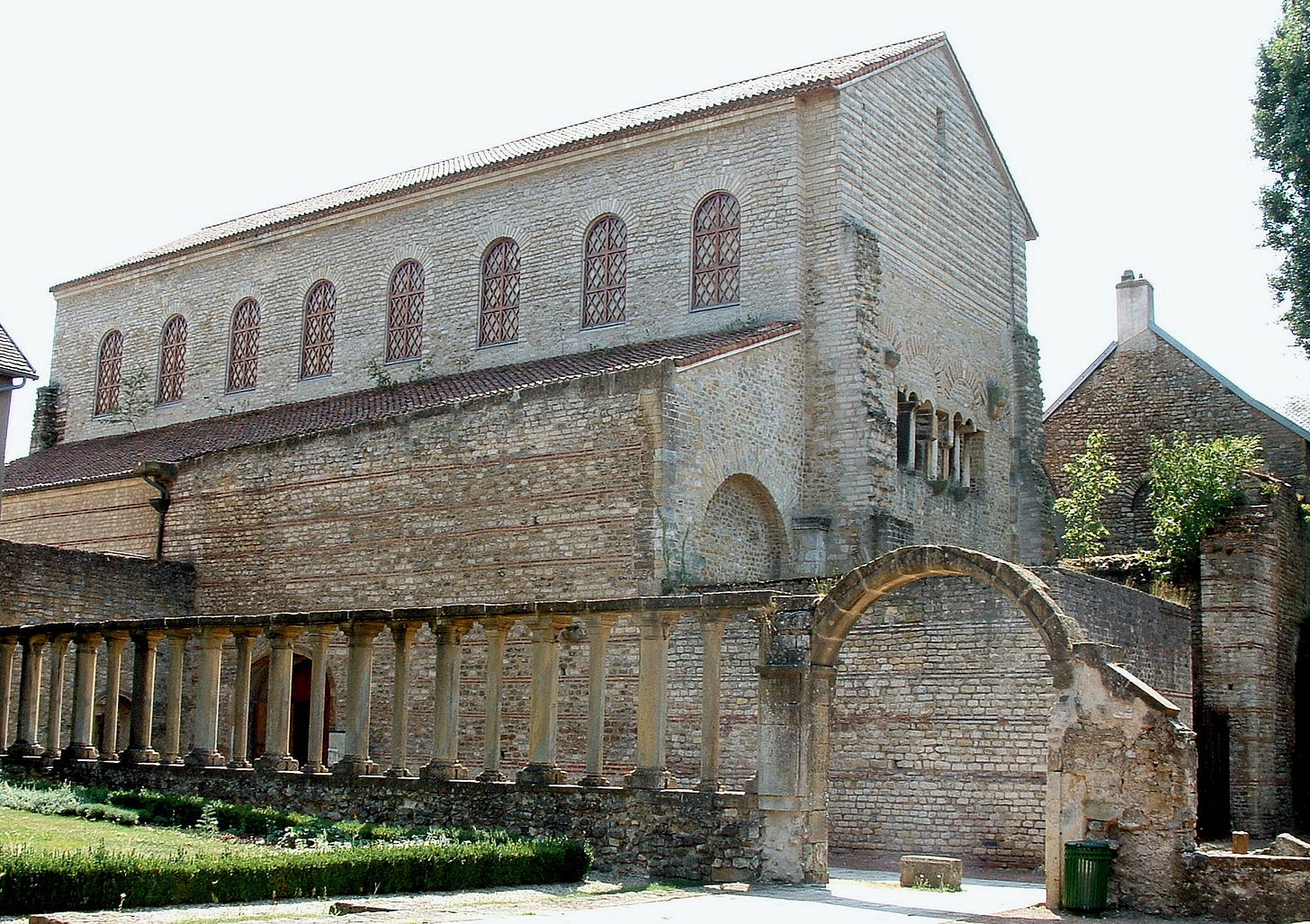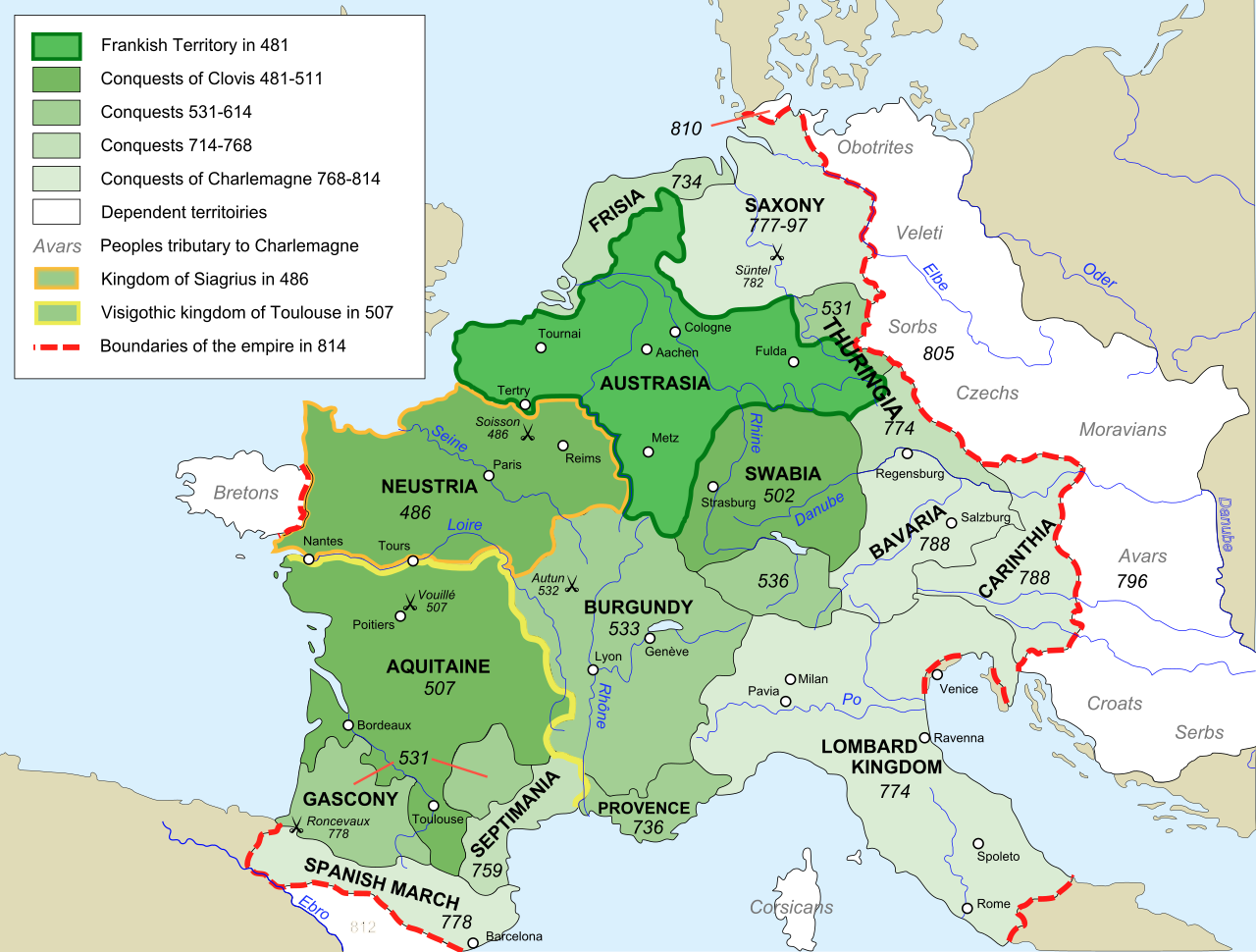Who were the Franks?
Among their ranks are counted the powerful Merovingians, Carolingians, and Salian dynasties. This article briefly explores their origins and the key historical sources of their early history.
First Mention of the Franks
The first mention of the Franks was recorded by the Roman soldier, turned historian, Ammianus Marcellinus (330 – 390s AD), who wrote about the various groups that the Romans encountered along its northern and eastern frontiers. At the time of his writing, these groups were generally organized as tribes, whose warrior bands were led by what were known as thiudans, truthins, or kunings. Although the English word king and German word König are derived from kuning, the Germanic groups of the 4th and 5th centuries referred to their leaders as truthins. In turn, the Romans referred to the truthins as reges (sing. rex). The Germanic folk also selected particularly courageous warriors to lead them into battle, known to the Romans as duces (sing. dux). An expansion into the origins of nobles and their titles is out of scope for this article, but will be described in another soon to come!
The Franks represented one of the great confederations of Germanic tribes at the turn of the 6th century whose truthins had been hired by the Roman military to serve as auxiliary leaders. One such truthin, named Merovech, belonged to the Salian Franks—a group that lived along the Middle to Lower Rhine region and returned to play a major role in the Holy Roman Empire (HRE) during the High Middle Ages (1000 – 1300 AD). Merovech’s son, Childerich I, would later be named a foederatus of the Roman empire, and his grandson, Clovis, was even named a honorary Consul of Rome by the Eastern Roman Emperor, Anastasius I, around 507 AD. Provided that the role of the Franks as foederati of the Roman Empire has already been discussed in part one of the series Origins of the Holy Roman Empire on this substack, we will not spend any more time discussing them. However, it would suffice to say that Clovis’ conquest of the Rhineland and the region of modern-day Belgium and Netherlands, as well as his victory against the Visigoths who sought to invade Gaul, was undoubtedly due to his expertise as a warrior and leader in the Roman tradition.
Nevertheless, what was this dynasty named after his grandfather that Clovis solidified in the annals of history? What do we know about them? Well, quite a bit is known about the Merovingians as well as other Frankish dynasties. As the Merovingians were the first great dynasty of the Franks, it is best to begin with them during the period in which they established kingdoms from the territory of their foederati ancestors.
A Synopsis of the Merovingian Franks
The Merovingian dynasty lasted from the late 5th century until 751 AD, located predominantly within what is today the countries of Belgium, France, Luxemburg, the Netherlands, northeastern Spain, and western Germany. Volumes of historical material have been dedicated the Merovingian Franks, beginning already in the 6th century AD with St. Gregory of Tours who wrote ten books on the topic, entitled Historia Francorum (History of the Franks) until shortly before his death in 594 AD. After Saint Gregory’s passing, a certain Fredegar dedicated four books to recording the events from the 590s until 642—shortly after the death of King Dagobert I—entitled the Chronicles of Fredegar. However, neither of these authors were Franks themselves, largely viewing the lives of the Merovingians like onlookers at a spectacle. Nevertheless, their accounts are definitive and, as far as can be corroborated by both other written and material records, very accurate. Unfortunately, dates were rarely specified, instead mentioning events in reference to the ages of a certain kings or other noteworthy individuals, leaving the exhausting chronological calculations up to scholars of the 19th and 20th centuries.

In contrast to these two previous chronicles, one other stands out, namely the Liber Historiae Francorum (The Book of the History of the Franks). Though the author is unknown, his attention to smaller, cultural details sets him apart from the other two. But most telling is that his account was more frequently copied throughout the Middle Ages than the other two chronicles. It is evident that medieval folk preferred his account, likely due to his description of Frankish origins as heralding from the Trojan King Priam. For modern ears it may seem strange to connect the Franks to the Trojans and that fateful war nearly two thousand years before the Romans first encountered the Franks, but it is precisely the Roman contact that is relevant. After all, the Romans made similar claims, as written by Vergil in his epic, The Aeneid. Although Aeneas’ father, Anchises, was indeed a member of the Trojan royal household, Priam was the king, and the Franks claimed him as their ultimate scion. A better narrative could not have been conceived to juxtapose the two groups, and consequently, inextricably bind them!
The chronicles were written in the tradition that most other medieval chronicles were composed, beginning with the creation of the world and progressing until the period of interest. The reason for this was twofold: first, medieval society was very influenced by the Romans of antiquity who did precisely the same thing only using the Titanomachy (wars between the titans and gods) as their point of departure; and second, medieval society was fascinated by origin stories—as most societies are—eager to know whose ancestors did what and where they came from. However, by chronicling everything from the beginning of time until the present, medieval writers were able to implicitly demonstrate the virtues and vices of their contemporaneous rulers compared to those of old, without having to explicitly state it—though they sometimes did in order to highlight a particularly outrageous character.
Thus, Saint Gregory’s History of the Franks captured the atmosphere of the Merovingian rulers and their courts, serving as the key document toward understanding the dynasty within the context of the Early Middle Ages. The other accounts are just as revealing, but one story in Book IV of the History of the Franks perfectly encapsulates the character of the Merovingian court culture, namely, the escapades of the Neustrian King Chilperic I and Austrasian King Sigibert I.
A 6th Century Family Feud
The two kings were sons of Clotaire I, and therefore grandsons of Clovis I. Though they shared the same father, Chilperic was born to Aregund, and Sigibert was born to Ingund. The women that were brought into the Merovingian household, via marriage or concubinage, were often from other Germanic groups living further to the east—descendens of truthins. For example, Ingund and Aregund were both sisters from Thuringia and had a cousin, Saint Radegund, whom Clotaire also married. The time period in which Clotaire conducted his polygamous and objectionable marriage policy overlaps precisely with the Byzantine invasion of Western Europe, described in part one of the series Origins of the Holy Roman Empire: Part 1 on this substack. After the Frankish defeat at the hands of the Byzantine general Belisarius, the Merovingians sought peace with the Byzantine Emperor, who, for all intents and purposes, likely saw the Merovingian kings as foederati of the Roman Empire who already owed him fealty. Thus, their alliance with the Ostrogoths against Byzantium was perceived as an act of rebellion, rather than an inimical independent tribe reflexively resisting Roman rule—as is so often taught.

The Franks, for their part, sought peace with other enemies as well. In fact, Sigibert I sent envoys to Emperor Justin II (son of Justinian I) who successfully attained peace with the empire. Clotaire even gave his daughter, Chlothsind, in marriage to the Lombard King, Alboin, who had assisted the Byzantine forces and later led the Lombards into northern Italy. However, marriage ties did not necessarily mean peace, either short term or long term. After all, when the Saxon vassals rebelled against the Frankish rule of Clotaire, he destroyed them and then continued his war into Thuringia—the land of three of his wives—where he destroyed their families as well, due to their support of the Saxons. If by now, you are thinking that Clotaire’s brutality was unique, rest assured that his behavior was the tragic norm for Merovingian rulers. In fact, his sons matched him in nearly every regard.
Having formed an alliance with the Lombards, the Franks sought to strengthen ties with the Visigoths in Hispania and Septimania (modern-day Spain). Thus, Sigibert I, son of Clotaire I, married Brunhild, daughter of the Visigothic King Athanagild. Not to be left out, Sigibert’s brother, Chilperic I, took the hand of Brunhild’s sister, Galswinth. Among the many hurdles preventing the marriages, one stood out more than the others, namely that both sisters had to renounce their Arianism and embrace Catholicism, which they both did with some hesitation. However, Chilperic, like so many of the Merovingian rulers, was the instigator of his own troubles and vowed that he would dismiss his other wives if only he could take Galswinth’s hand. True to his word, his dismissed the others upon his marriage to the Visigothic princess, but soon found a temporary enemy in his former wife, Fredegund, who initiated a campaign to rid the palace of Galswinth. Having discovered the plot that her husband and his former wife had hatched, Galswinth willing offered to leave and return home, to which Chilperic convinced her to remain, only to have a base servant strangle her to death.
A bloody and disastrous civil war ensued, as Sigibert’s wife, Brunhild, was the sister of the slain queen. Both Chilperic and Sigibert sought to despoil each other’s lands, often employing their other brother, Guntram King of Burgundy, to assist them in their fratricidal endeavors. However, Guthram could not always be counted upon as he routinely changed sides, depedning upon who offered him land and resources. Thus, the Frankish territory along the border of Neustria and Austrasia (southwest of Paris) was entrenched in pillaging and destruction until Sigibert had finally gained the upper hand—only to be assassinated by servants of Chilperic’s remarried wife, Fredegund. Later on, Sigibert’s widow, Brunhild, continued the civil war against her brother-in-law’s faction, which continued even after both Chilperic and Sigibert had died. Neither willing to forgive past treacheries, nor eager to seek peace, their widows, sons, and grandsons continued the bloody feud for decades to come. The hostilities finally reached an end when Brunhild was executed in 613 by the son of Fredegund, Clotaire II, in which her body was tied to four horses and rent apart.
As the purpose of this exposé into the Merovingian ruler’s attitudes toward one another is not meant to digress into a chronicle recounting all of the acts of horror and debauchery wrought by the descendants of Clovis, we will now return our focus to a summary of the Franks.
Summary of the Franks
The Frankish dynasties controlled the heart of the former transalpine Roman provinces: Gaul. Although their rule was rather haphazard, considering the constant feuds, assassinations, and usurpations, they still managed to establish an ancestral foundation that would later act as the spring from which medieval families drew their lineage. It is for this reason that the French often identify Clovis as their first king rather than the 10th century Hugh Capet, or as to why the figure of Charlemagne is claimed by the French, Belgians, and Germans as a sort of ethnic champion. The Franks remained key players throughout the Middle Ages as descendants of the key rulers of Europe following the dissolution of the Roman jurisdiction, generally accepted as the worthy recipients of a reestablished Roman Empire in the west.





